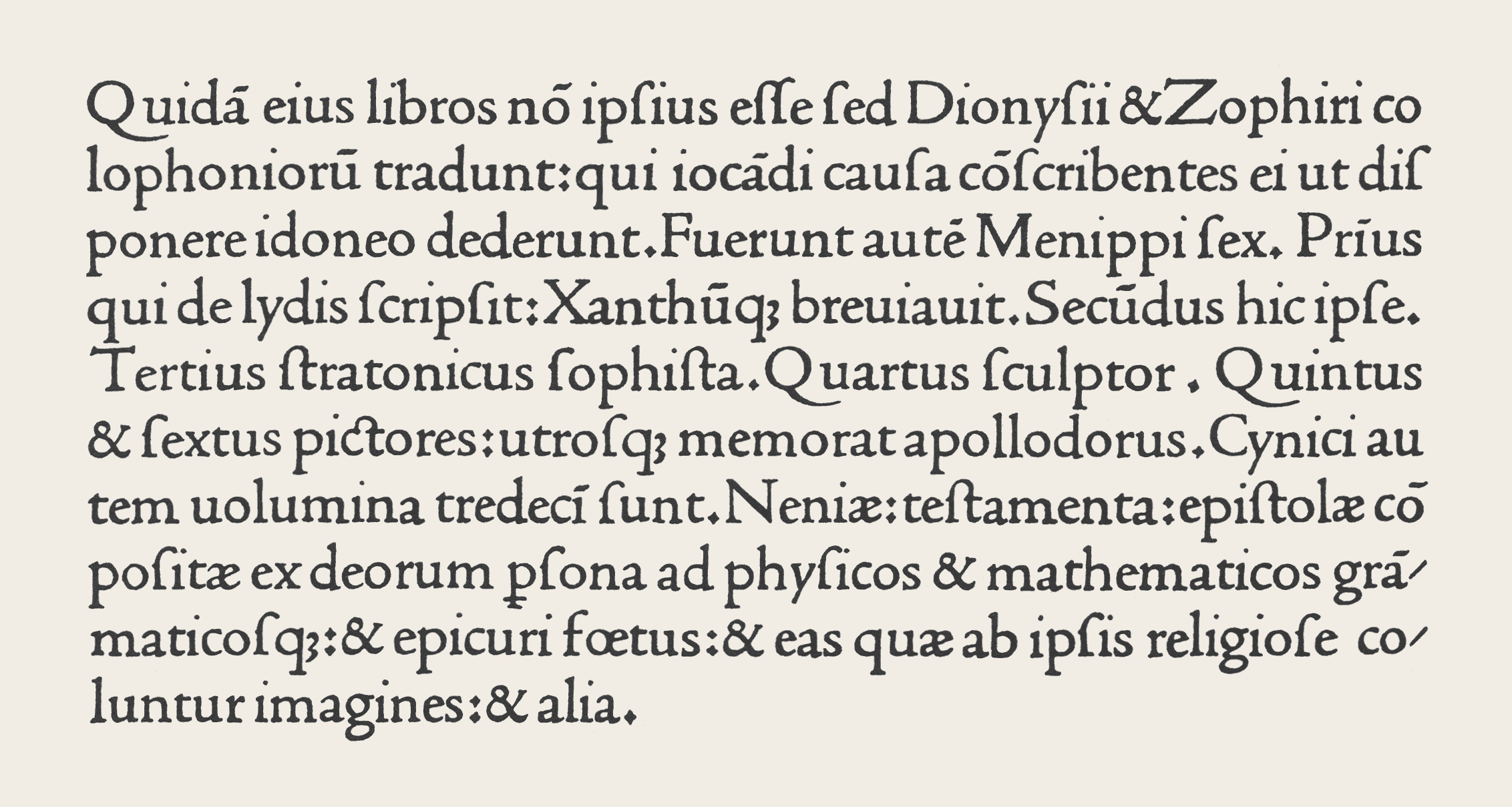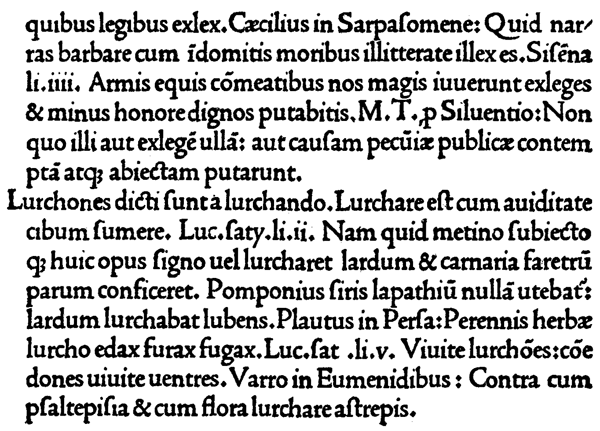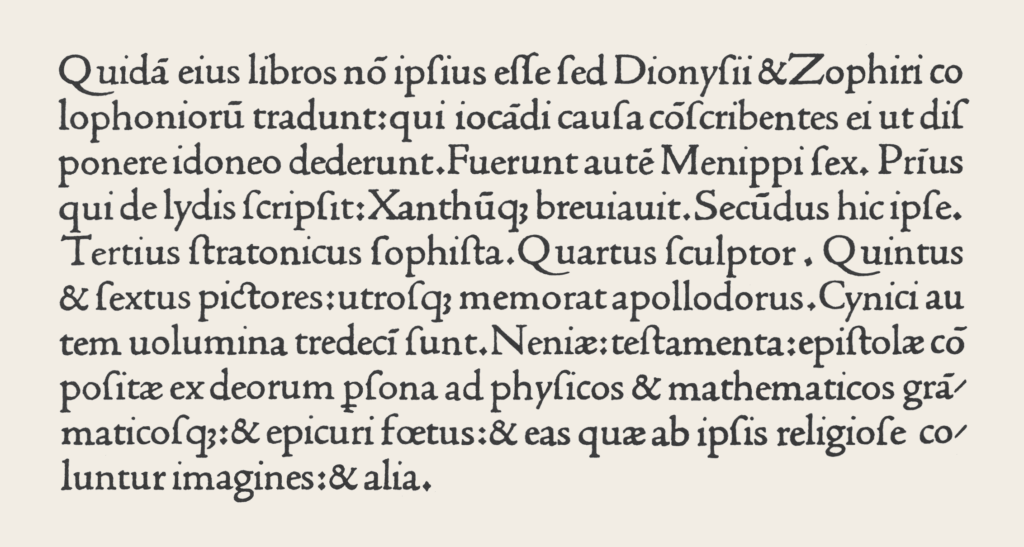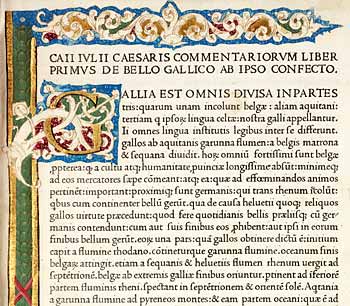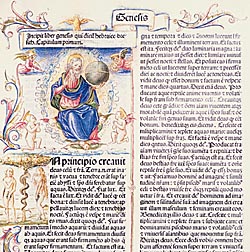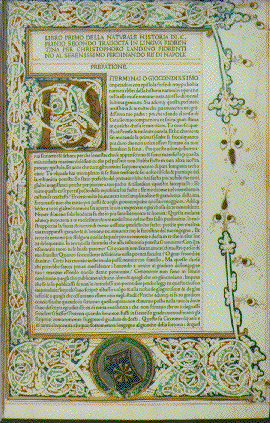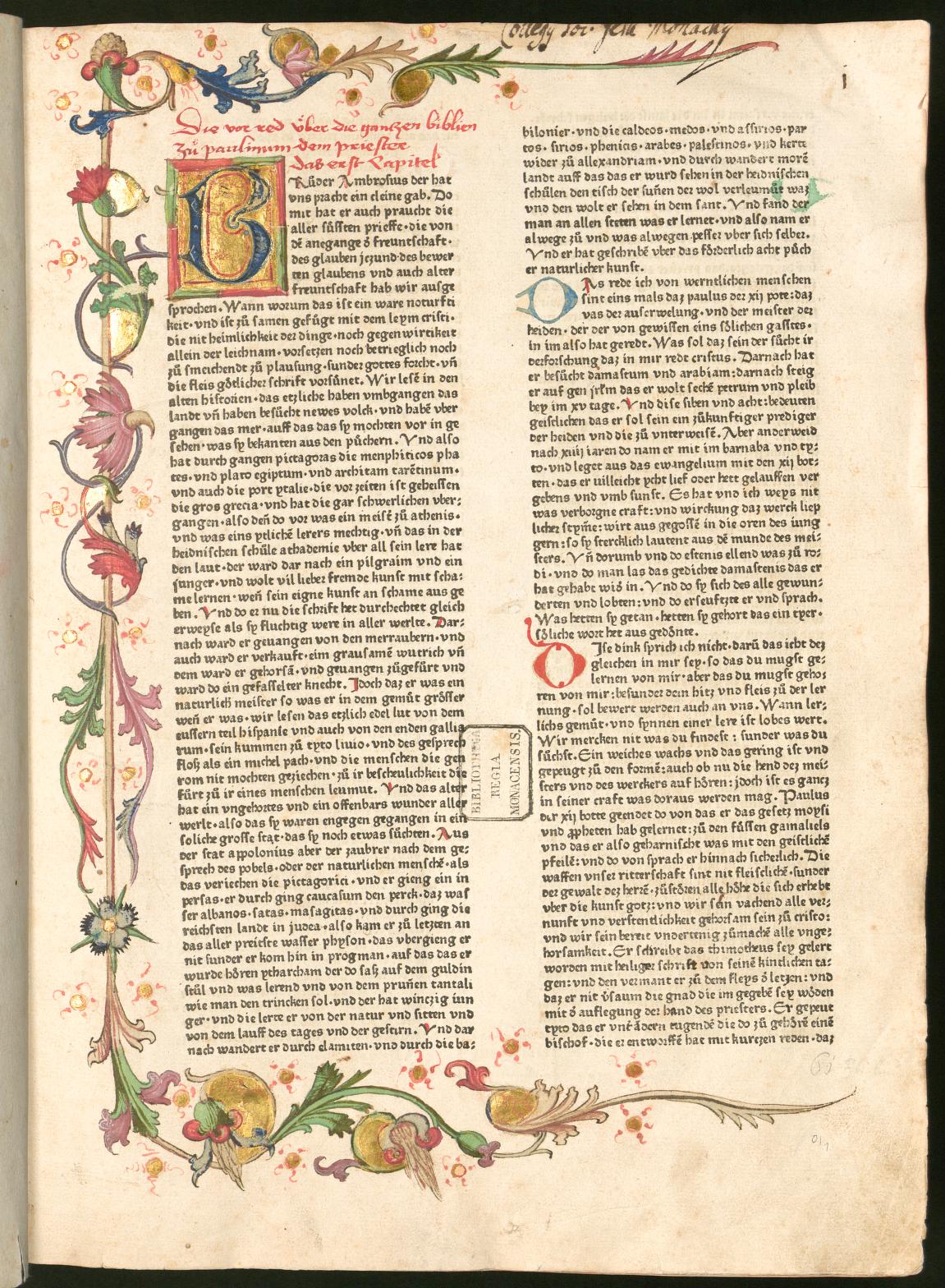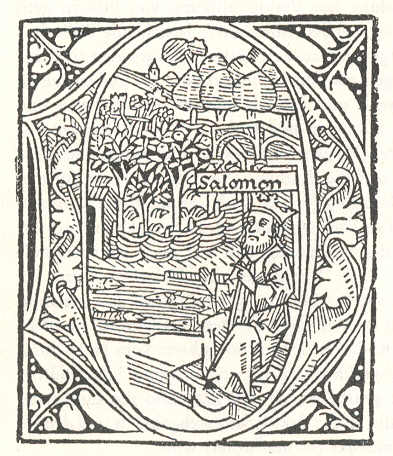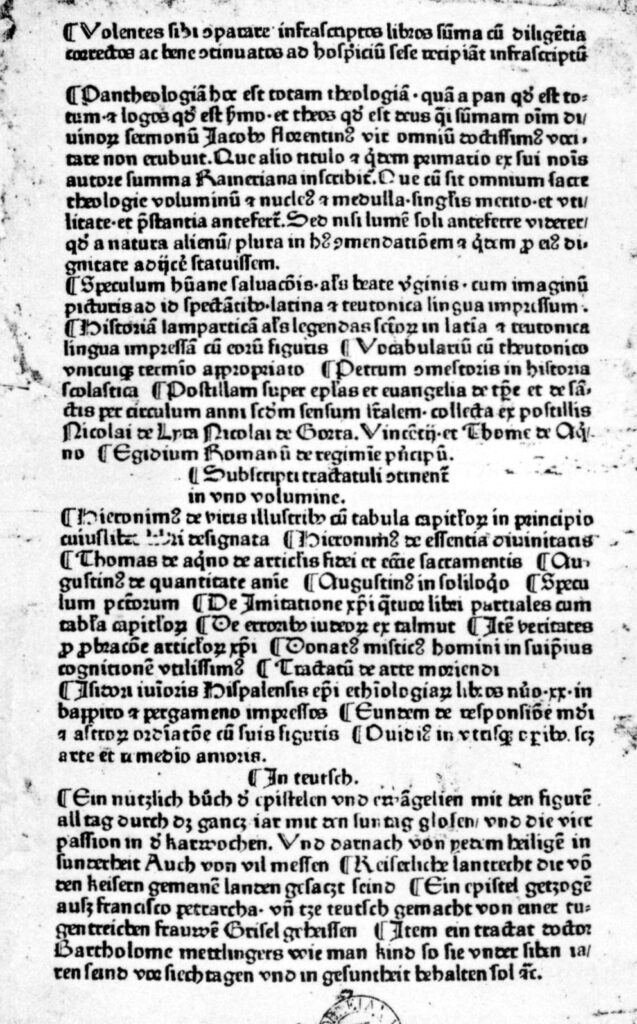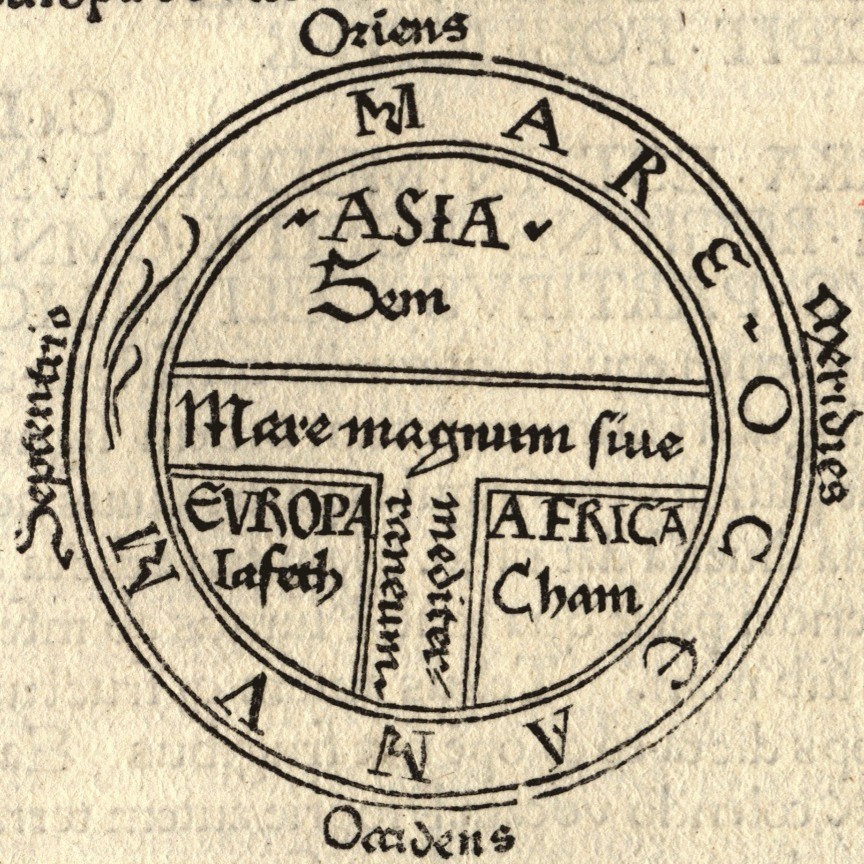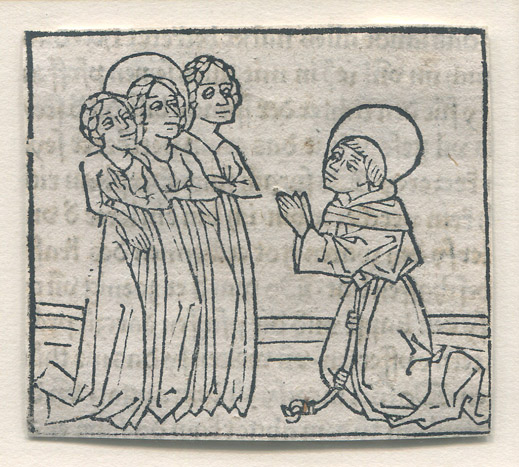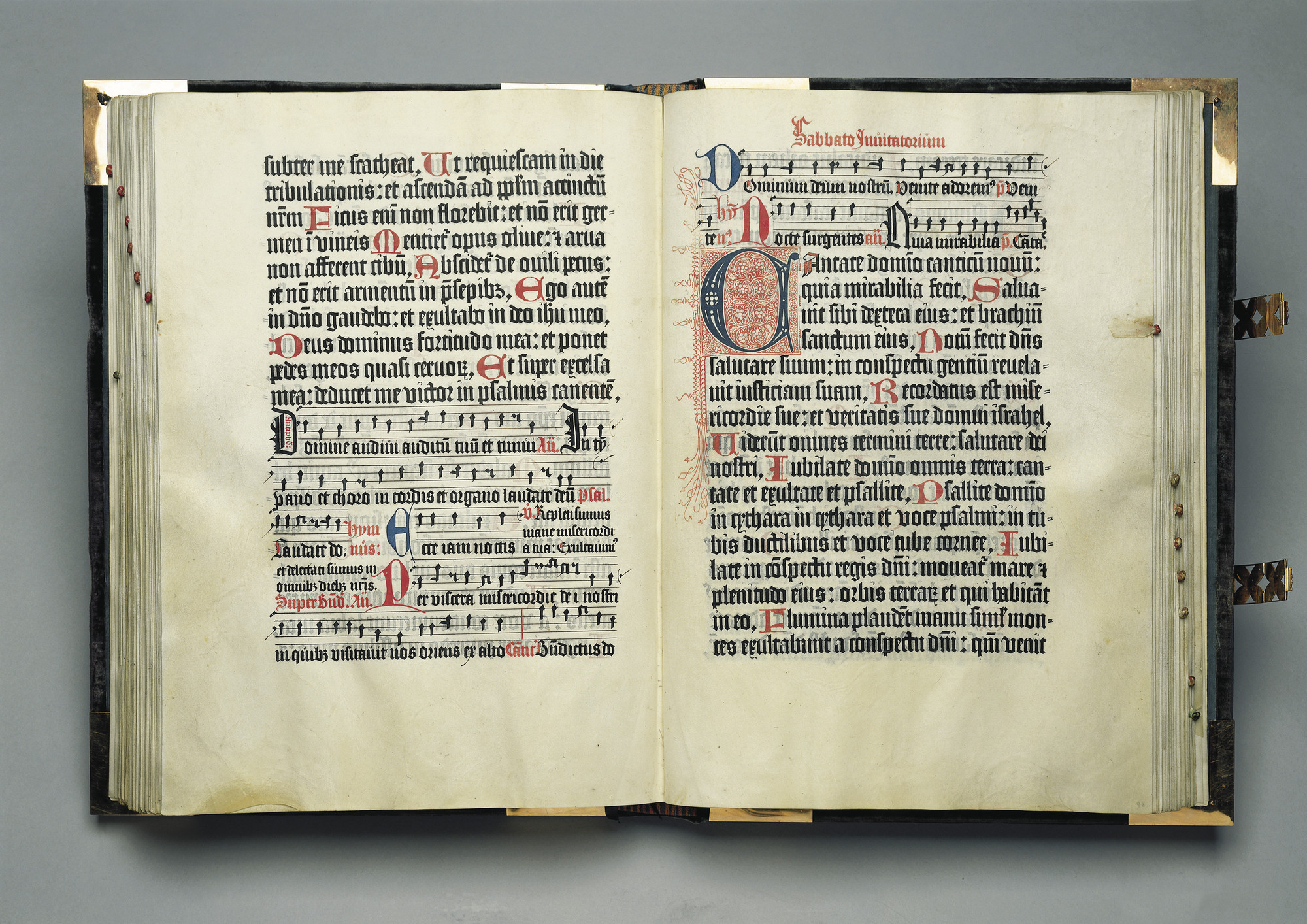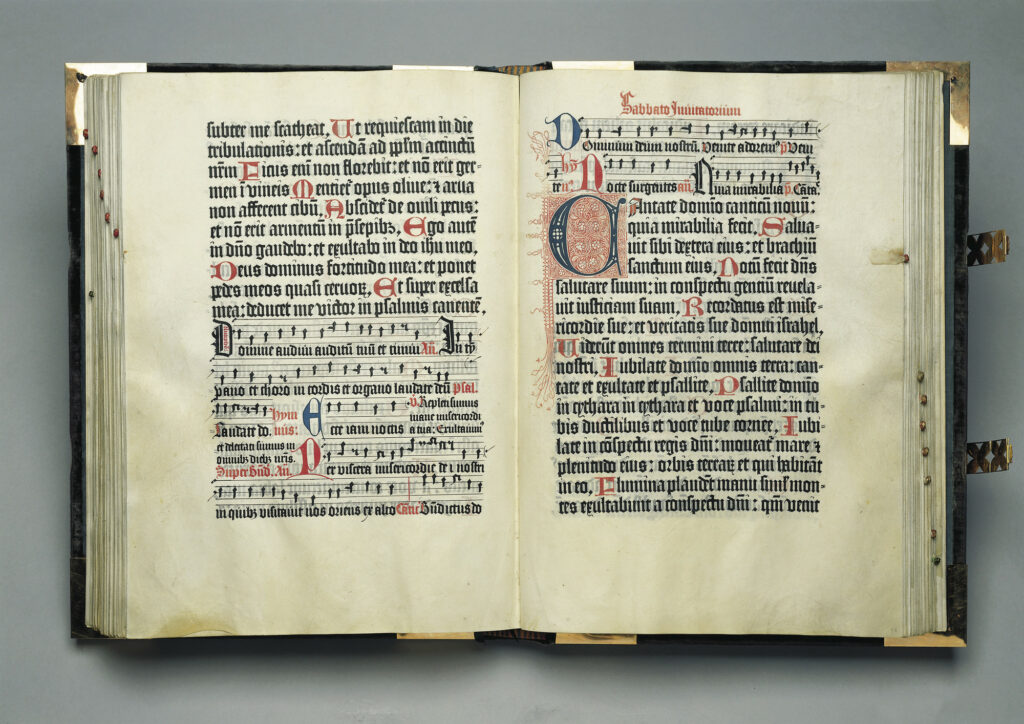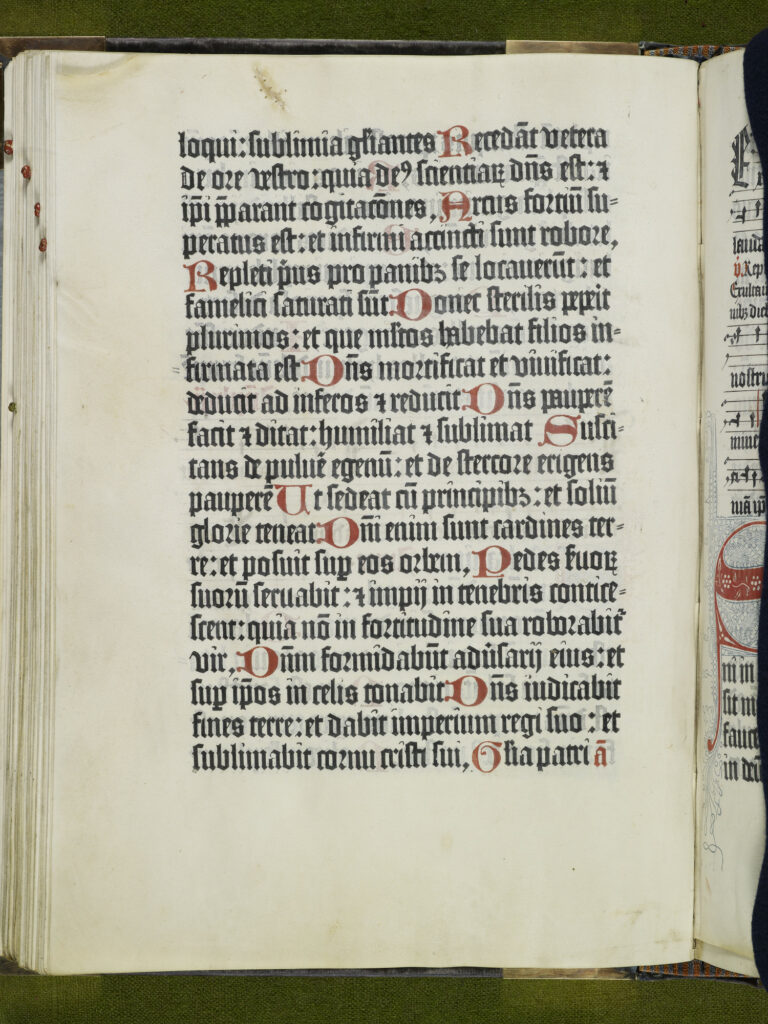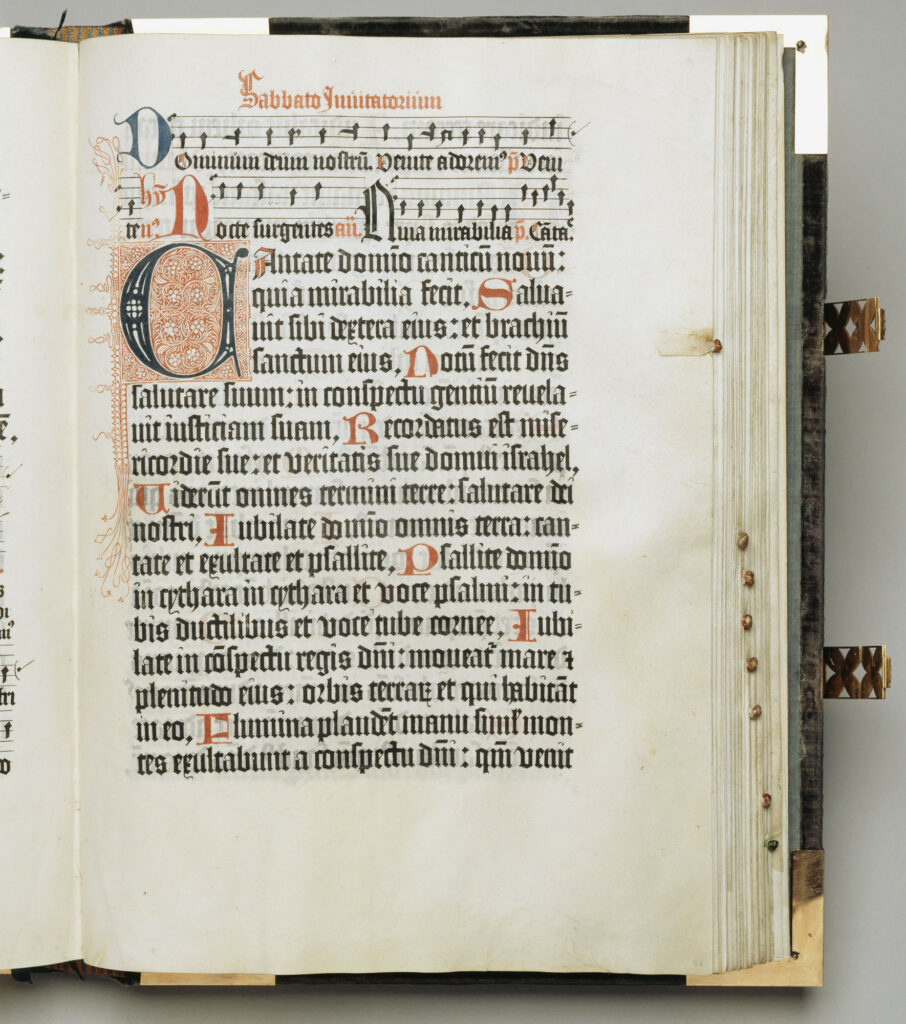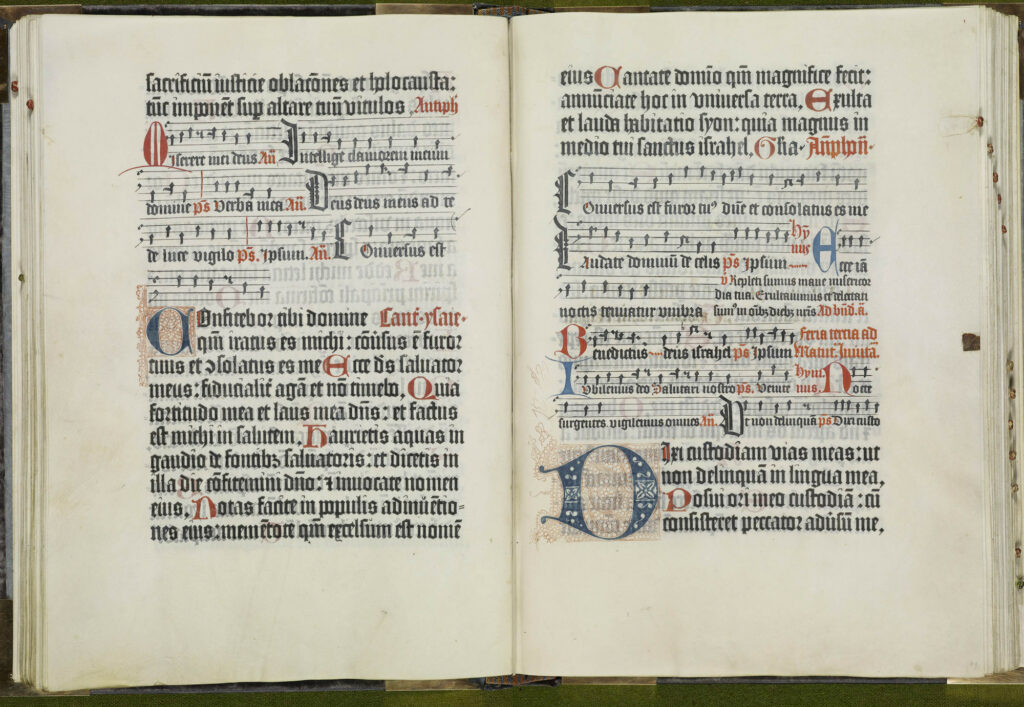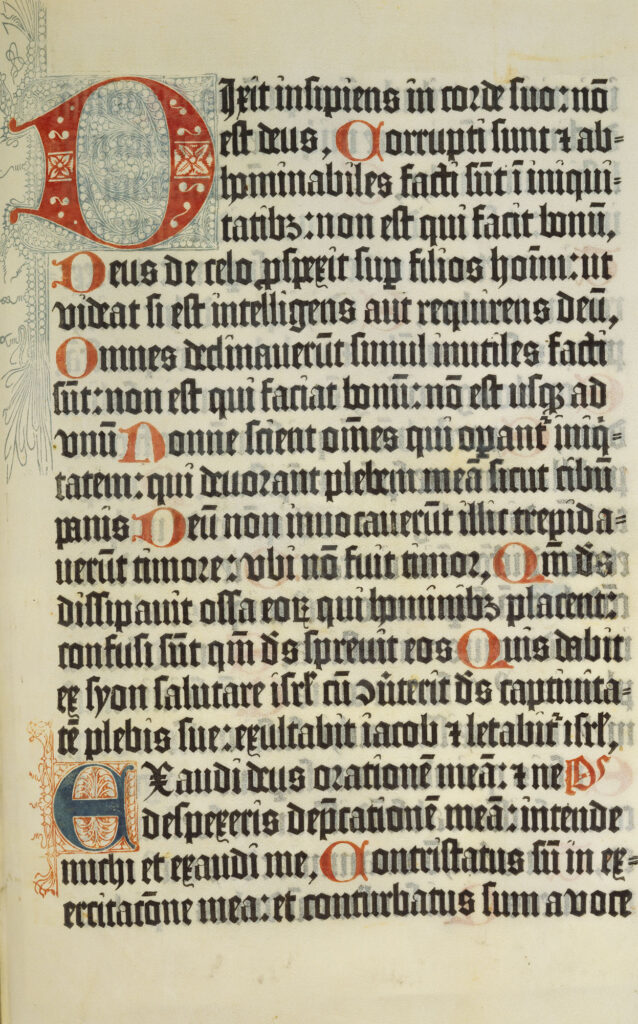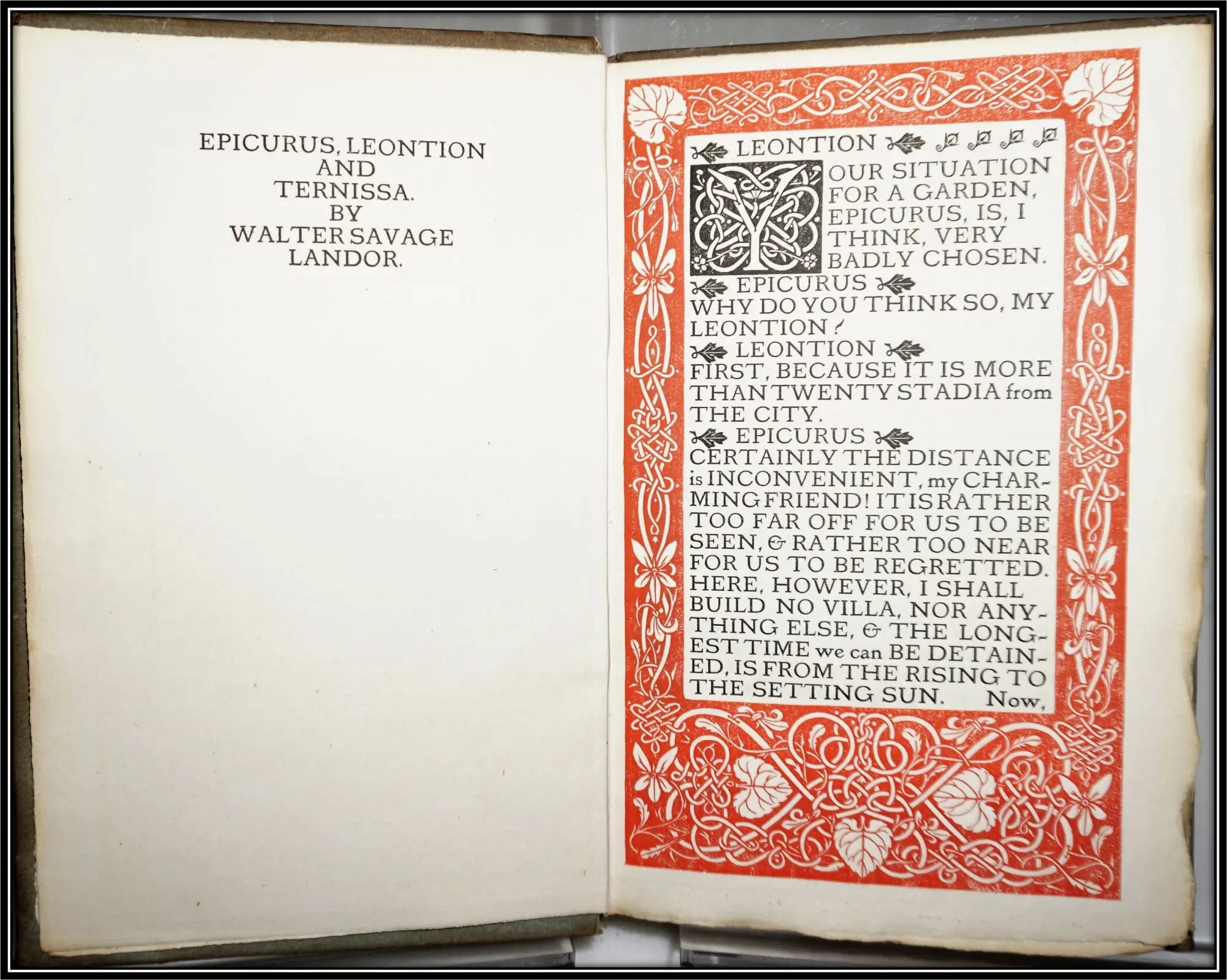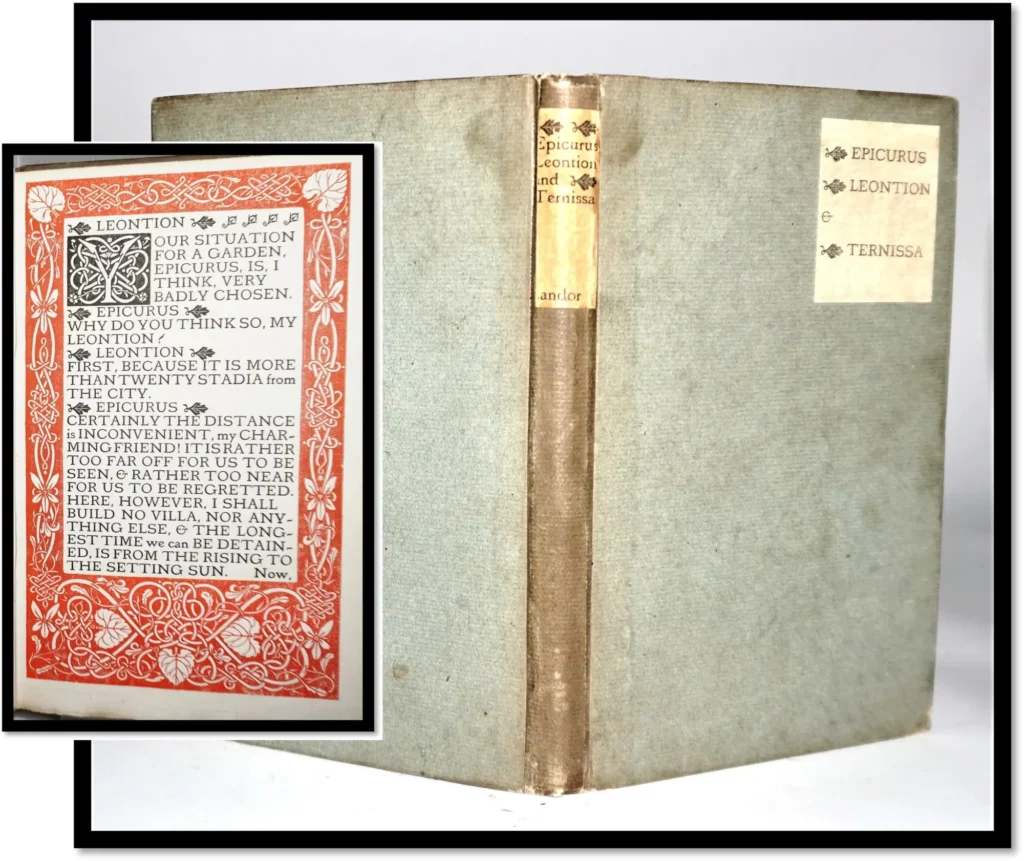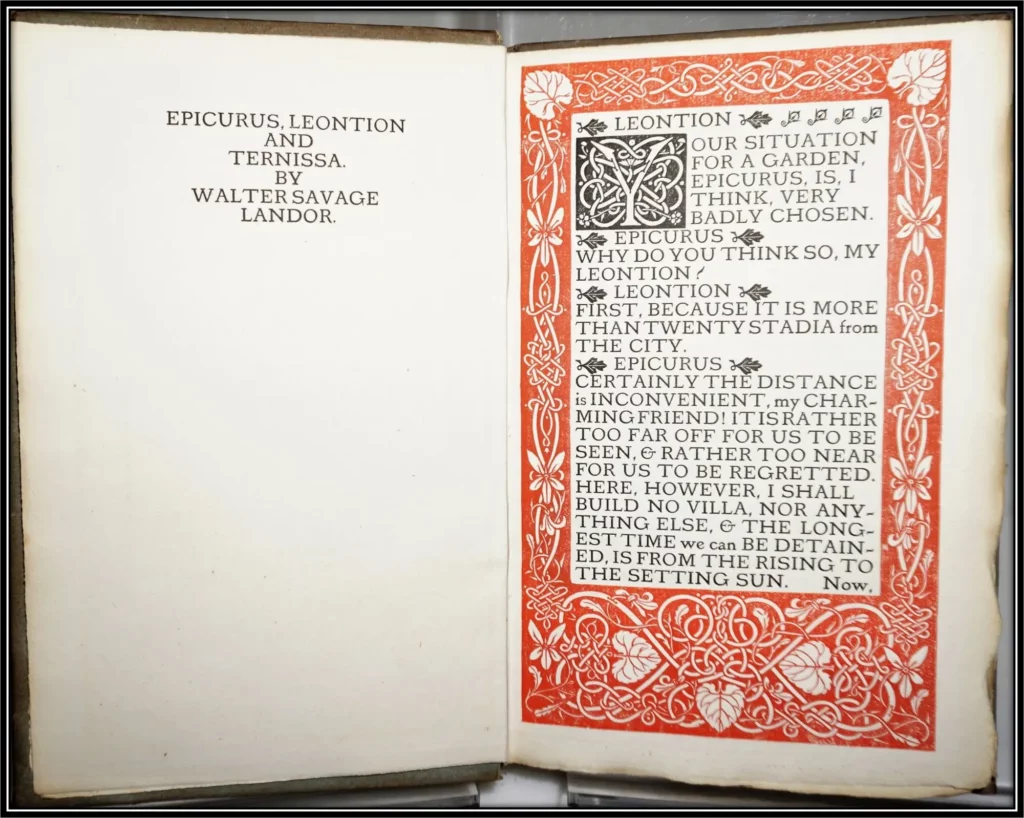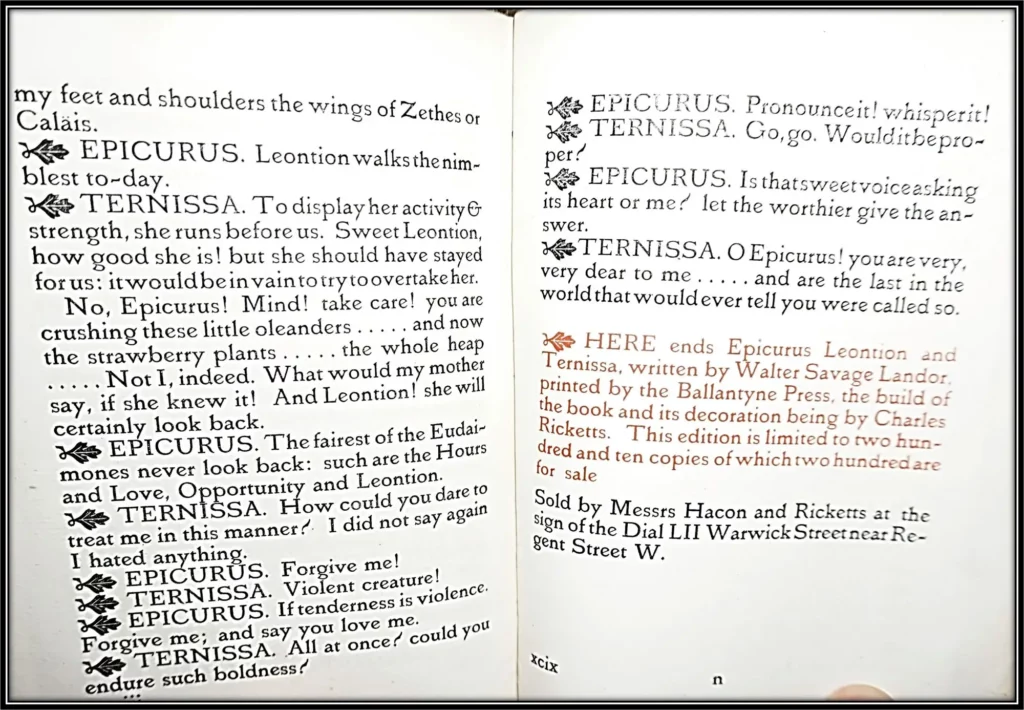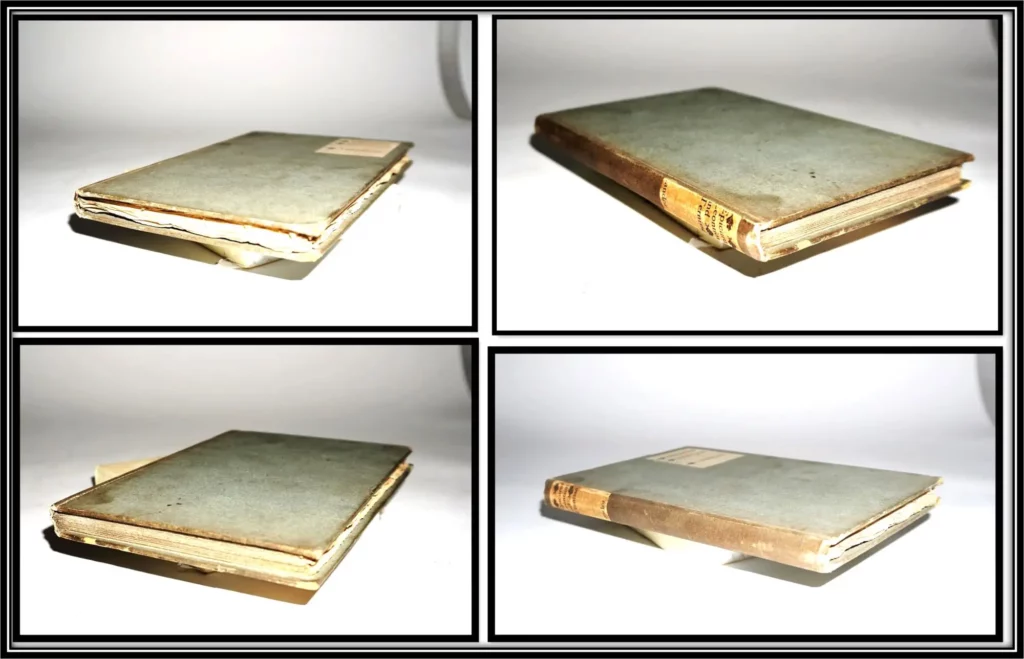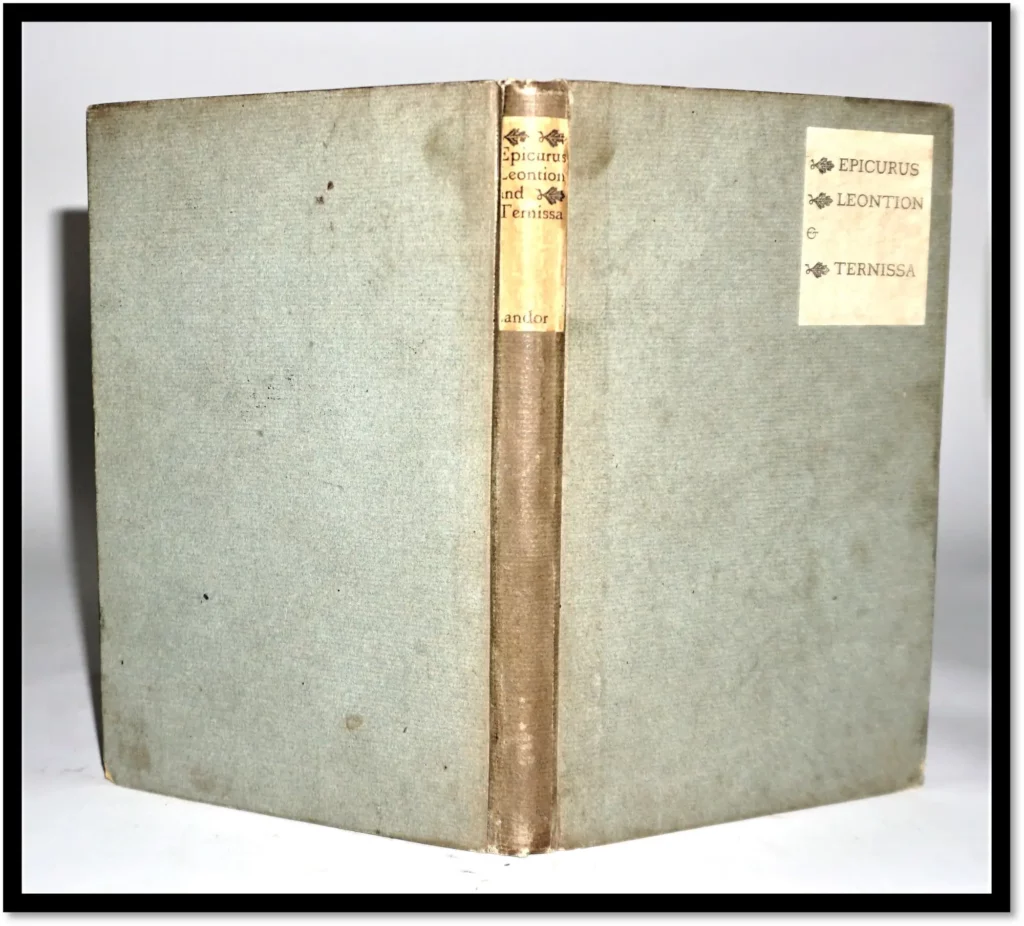PLINIUS SECUNDUS, Gaius (23-79). Historia naturalis, in Italian. Translated by Cristoforo Landino (1424-1492). Venice: Nicolaus Jenson, 1476.







Royal 2° (413 x 265mm). Collation: [1-2110 22-268 27-3510 3610(10+1) 378 3810 398 40-4110 428 4310] (1/1 blank, 1/2r translator’s prologue, 1/5v blank, 1/6r book I, 3/1v blank, 3/2r book II, 43/9v colophon, 43/10 blank). 413 (of 415, without first and final blank leaves); sheet 15/5.6 misbound at centre of quire 26. 50 lines. Type: 1:115R, scattered Greek. ILLUMINATED BY A VENETIAN ARTIST IN THE CIRCLE OF GIROLAMO DA CREMONA, BENEDETTO BORDON AND THE THE MASTER OF THE SEVEN VIRTUES in camaieu gris, full-page architectural border opening Book II incorporating the arms of the Bollani family of Venice, 8 scholars in lower border with mythical beasts, the text page a fictive banner, initial miniature of a warrior holding his shield, 11-line historiated initials in classical style opening each book, also in camaieu gris on a red, green or blue ground, minor initials alternating in red, blue or green, foliation in two early hands (showing that the misbinding of 15/5.6 must be original), book numbers added to headline in a 17th-century Italian hand. (First leaf lightly soiled, section of blue-painted border of frontispiece restored, a few other extreme foremargins at beginning and end expertly strengthened, occasional light stains, a few small wormholes at front, marginal tear in 3 leaves, last leaf torn and repaired.) 18th-century sprinkled calf, gilt spine, red leather spine label, red sprinkled edges (sides scuffed, hinges and spine worn); modern blue cloth box. Provenance: Candiano Bollani, Venice (c.1413-1478; illuminated armorial; see below) — Thomas Herbert, 8th Earl of Pembroke (1656-1733, First Lord of the Admirality, Lord Privy Seal, Lord High Admiral; in the 1776 list of his early books prepared by Thomas Dampier and published in Dibdin’s Bibliographical Decameron, III, p.290; by descent, Pembroke sale Sotheby’s, 25 June 1914, lot 159,£225 to:) — Tammaro de Marinis (sale Hoepli, Milan, part 2, 30 November 1925, lot 317) — Otto Vollbehr (bookplate, duplicate stamp) — Robert Williams (bookplate).
FIRST EDITION IN ITALIAN, ILLUMINATED BY A CONTEMPORARY VENETIAN ARTIST FOR CANDIANO BOLLANI. The decoration of the Bollani Pliny is characteristic of Veneto-Paduan Renaissance illumination popular with wealthy humanist book-collectors in the 1470s and 1480s. The illusionism and imagery of its architectural frontispiece’s triumphal Roman arch with all’antica motifs, including fictive cameos, cornucopiae, masks and satyrs, from which is suspended a ragged piece of parchment, and historiated initials drawn and painted in grisaille, skillfully evoke the Classical era. The illuminator was a Venetian artist in the circle of Girolamo da Cremona, Benedetto Bordon and the Master of the Seven Virtues, three of the most accomplished miniaturists of incunables active in Venice in the 1470s and 1480s. His style incorporates elements of their work: Girolamo’s distinctive reclining deer and lions in a stony landscape strewn with bound books, and Bordon’s trompe l’oeil rock crystal initials on monochromatic floral grounds, and the anonymous master’s aged male figures with expressive and bearded faces, dressed in deeply-folding drapery. This combination of influences reflects the fact that the trio worked in collaboration with each other, as well as individually, such as for the illumination from 1477-1481 of a magnificent series of legal texts printed by Jenson, for Jenson’s business associate Peter Ugelheimer of Frankfurt (Gotha, Landesbibliothek, Mon. Typ. 1477, 2.4, 2.10, 2.12, 2.13; see The Painted Page, ed. by J. J. G. Alexander, 1994, nos. 96-98, and Andrea De Marchi, in Parole dipinte: la miniatura a Padova dal Medievo al Settecento, ed. by G. Canova Mariani, 1999, nos. 145-148).
Three other books from the library of the Bollani, a patrician family of Venice, are known. One, a manuscript, contains Candiano’s coat-of-arms together with that of his wife, Lucrezia Marcello. Two others (a manuscript Petrarch, Poiano: 1476, and a Bible printed on vellum, Venice: Jenson, 1479) were illuminated by artists associated with Jenson: the Pico Master, and the Pico Master with another artist in the circle of Bordon (Armstrong, Studies of Renaissance Miniaturists in Venice, 2003, pp. 53, 320, 322). Since the Bible was printed the year after Candiano’s death, it was presumably owned by one of his sons, Domenico, Francesco or Girolamo. Dispersals from the Bollani library commenced already in the 15th century, as witnessed by the later ownership of the manuscript by Nicoletto Vernia (d. 1499), and continued into the 18th century.
The 1476 Pliny is a masterpiece of typographic design, printed with Jenson’s influential Roman types and in proportions that continue to be emulated today. The Bollani copy joins a handful of other deluxe copies illuminated for grand patrons such as the Ridolfi of Florence and others associated with its production. The translation and printing of the edition was commissioned by the Strozzi, the powerful Florentine banking family, in conjunction with Giovambattista Ridolfi. Ridolfi and Girolamo Strozzi remained in Venice during the printing of the edition, and Ridolfi took delivery of copies by September of that year. (Cf. F. de Roover, “Per la storia dell’arte della stampa in Italia”, La Bibliofilia, 55, 1953, 107-117.)
A large copy with pinholes frequently visible at lower corner. Sheet 42/3.6 variant with heading of chapter XX on 42/3r reading ‘Ematite et schisto’. H *13105; BMC V, 176 (IC. 19693-4); CIBN P-469; IGI 7893; BSB-Ink. P-611; Bod.Inc. P-372; Klebs 787.1; Goff P-801.




